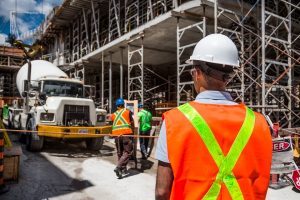
Also known as abrasive blasting, sandblasting is a surface finishing process that involves the use of a powered machine — typically an air compressor as well as a sandblasting machine — to spray abrasive particles under high pressure against a surface. It’s called “sandblasting” because it blasts the surface with particles of sand. As the sand particles strike the surface, they create a smoother and more even texture. In this post, you’ll learn more about this surface finishing process and how it’s performed.
Overview of Sandblasting
Sandblasting leverages the abrasive properties of sand to create smoother surfaces with fewer physical imperfections and flaws. It’s no secret that sand is rough and gritty. Because of these properties, it’s able to wear away at excess or unwanted material on a surface. Sandpaper, for example, contains many individual particles of sand. When rubbed against a surface, the sand removes some of the top-layer material, thereby creating a smoother texture. Sandblasting works the same way except it involves the use of highly pressurized sand.
How Sandblasting Is Performed
The first step to performing sandblasting is pouring the sand into the sandblasting machine. Sandblasting machines have a chamber on top in which the sand is poured. The sandblasting machine is then connected a conventional air compressor that, when activated, propels the sand out through a handheld nozzle. Depending on the settings, the pressure of the sand may be anywhere from 50 to 130 pounds per square inch (PSI).
The sand is then “blasted” across the surface, and because of its abrasive properties, the sand is able to create a smoother surface. Concrete, for example, is often sandblasted. After the concrete has been poured and allowed to dry, it’s treated with sandblasting. The process removes some of the excess material on the concrete, which in turn makes it smoother.
Sandblasting vs Shot Blasting: What’s the Difference?
Sandblasting is just one of several blasting-type surface finishing processes. There’s also shot blasting, which is even more effective at smoothing otherwise rough and rigid surfaces. What’s the difference between sandblasting and shot blasting exactly?
With sandblasting, sand is propelled against a surface. With shot blasting, on the other hand, small metal balls or beads are propelled against a surface. The balls or beads are often made of stainless steel, copper, aluminum or zinc. Regardless, all of these metals are harder than sand, making shot blasting even more effective than its sandblasting counterpart.
See Monroe’s Custom Manufacturing Services.
No tags for this post.
